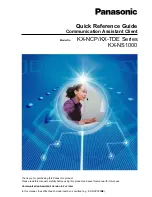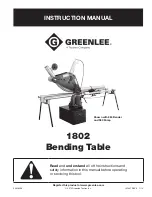
8/12
Connecting to the Controller’s Wireless Port
Each controller has a wireless port in which one end of the Wireless
Receiver’s telephone cable plugs in. Uncover the controller to locate
the wireless port on the PCB board (marked as
Wireless Module
).
Terminal Block Cover
In certain jurisdictions, terminal block covers are required to meet local
safety regulations. Terminal block covers are available for all
controllers and are used to conceal the controllers’ wire terminals.
Terminal block covers are optional and are sold as peripherals.
The terminal block cover can be clipped on to the controller as shown
below.
Figure 13:
Terminal block cover installation
Maintenance
Turn off power before any kind of servicing.
Each controller requires minimal maintenance, but it is important to
take note of the following:
-
If it is necessary to clean the outside of the controller, use a
dry
cloth.
-
Retighten terminal connector screws annually to ensure the wires
remain securely attached.
Disposal
The Waste Electrical and Electronic Equipment (WEEE) Directive sets
out regulations for the recycling and disposal of products. The
WEEE2002/96/EG Directive applies to standalone products, for
example, products that can function entirely on their own and are not a
part of another system or piece of equipment.
For this reason Distech Controls products are exempt from the WEEE
Directive. Nevertheless, Distech Controls products are marked with the
WEEE symbol
, indicating devices are not to be thrown away in
municipal waste.
Products must be disposed of at the end of their useful life according to
local regulations and the WEEE Directive.
North American Emissions Compliance
United States
Changes or modifications not expressly approved by
Distech Controls could void the user's authority to operate
the equipment.
This equipment has been tested and found to comply with
the limits for a Class B digital device, pursuant to Part 15 of
the FCC Rules. These limits are designed to provide
reasonable protection against harmful interference in a
residential and commercial installation. This equipment
generates, uses and can radiate radio frequency energy
and, if not installed and used in accordance with the
instructions, may cause harmful interference to radio
communications. However, there is no guarantee that
interference will not occur in a particular installation. If this
equipment does cause harmful interference to radio or
television reception, which can be determined by turning
the equipment off and on, the user is encouraged to try to
correct the interference by one or more of the following
measures:
-
Reorient or relocate the receiving antenna.
-
Increase the separation between the equipment and
receiver.
-
Connect the equipment into an outlet on a circuit
different from that to which the receiver is connected.
-
Consult the dealer or an experienced radio/TV
technician for help.
Canada
This Class (B) digital apparatus meets all the requirements of the
Canadian Interference-Causing Equipment Regulations.
Cet appareil numérique de la Classe (B) respecte toutes les exigences
du Règlement sur le matériel brouilleur du Canada.






























